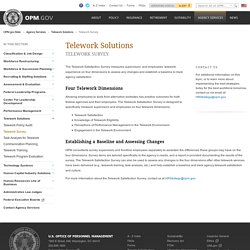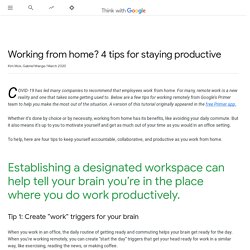

The Impact Of The Coronavirus On HR And The New Normal Of Work. For the past decade I have been writing and speaking about the disruptions in the way we work, learn and communicate.

In my article, Humans, Gigs and Robots Are The New Blended Workforce, I saw an increase in full time workers working side by side with gig workers and bots or digital assistants. I went on to say: the pace of change has never been this fast, yet it will never be this slow again! What I did not envision is we would be working exclusively from our homes while juggling home schooling and trying to figure out how to conduct three Zoom sessions at the same time: one for our own meeting, one for our spouse or partner’s meeting, and one for our child learning at home! The Covid-19 coronavirus is becoming the accelerator for one of the greatest workplace transformations of our lifetime. How we work, exercise, shop, learn, communicate, and of course, where we work, will be changed forever! 1) Ramp up Training and Investment in Remote Working Microsoft is going one step further.
How to Create an Effective Teleworking Program. SHRM has partnered with Security Management Magazine to bring you relevant articles on key HR topics and strategies.

Mention teleworking, and some managers immediately feel at sea. How can I supervise employees I can't see? Will staffers be sending check-in emails while watching Netflix? Can professionalism be maintained in pajamas? Yet behind these fears lay opportunities. Of course, there are some jobs that are not conducive to telework, such as positions that require an on-site presence. Growing Trend About 43 percent of U.S. workers work remotely in some capacity, even if that means telecommuting only once a week or less, according to the 2017 version of Gallup's annual report, The State of the American Workplace. As telecommuting becomes more popular, the average amount of time each teleworker spends at home or in another remote location increases. One of the drivers of the growth of telework has been the U.S. federal government.
Nonetheless, barriers remain. Best Practices. Telework.gov. Work From Home is dead, long live Work From Anywhere. My colleagues and I published a couple of different views on the future of “work from home” and remote work last Friday — a story that, if analytics is any sign, really struck a nerve with many of you.

That shouldn’t be surprising particularly in the tech industry, where knowledge work fundamentally means we spend the vast majority of our time in an “office.” Everything from minor annoyances (they cut down the size of the Klondike bars in the mini-kitchen!) To massive complaints (I am trying to think through a complex ML algorithm as my open-office colleagues are having a Nerf war!) Telework Survey. The Telework Satisfaction Survey measures supervisors’ and employees’ telework experience on four dimensions to assess any changes and establish a baseline to track agency satisfaction.

Four Telework Dimensions Allowing employees to work from alternative worksites has positive outcomes for both federal agencies and their employees. The Telework Satisfaction Survey is designed to specifically measure supervisors and employees on four telework dimensions: How Effective Is Telecommuting? Assessing the Status of Our Scientific Findings - Tammy D. Allen, Timothy D. Golden, Kristen M. Shockley, 2015. Introduction Telecommuting has become an increasingly popular topic in the public interest.

A bright spotlight was thrown on the practice in February 2013 when there was media uproar after Yahoo CEO Marissa Mayer banned Yahoo employees from working from home (Guynn, 2013). Mayer stated that the ban was necessary in order to foster a collaborative, inventive environment. Telework.gov. Get Control! Time Management Training that Boost TQ. Get Control! Time Management Training that Boost TQ. New to Working Remotely? These Resources Can Help. Almost overnight, remote work has become mainstream.

Companies around the world are encouraging their employees to work from home to prioritize the health and safety of their workforce and communities amid coronavirus. 4 tips to work from home productively. Tip 1: Create “work” triggers for your brain When you work in an office, the daily routine of getting ready and commuting helps your brain get ready for the day.

When you’re working remotely, you can create “start the day” triggers that get your head ready for work in a similar way, like exercising, reading the news, or making coffee. A workspace may also be key. If you can sit down and be productive anywhere, that’s great. If you need more structure, establishing a designated workspace — whether it’s a separate room, a fully stocked desk, or just a clean part of your kitchen table — can help tell your brain you’re in the place where you do work productively and without distraction. Six Tips for Working Remotely. Working remotely may be new to a lot of people and there are a number of helpful tips from professionals all over the world posting about it on LinkedIn (check out hashtags #WFH and #RemoteWork).

If you’re not already, make sure you connect with your coworkers on LinkedIn to keep each other updated, share ideas and advice or to simply check-in. Staying connected is more important than ever as we navigate changes in our daily routine, and serves as a reminder that we’re not alone. While it’s going to be different for everyone, here are a few tips to help you navigate this new remote working environment. 1. Create a new norm Try to follow your normal work routine to stay productive. 2.